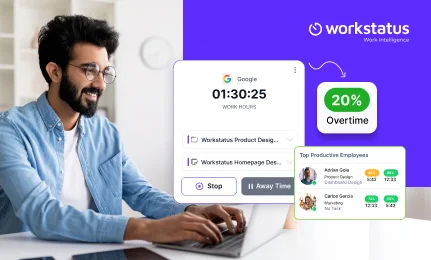Table of Contents
Introduction
The alarm clock rang at 5:30 in the morning; this was the time that John got up. John then started to think again about whether it was right for him to continue working the “first shift”. He had started this early factory job after high school. Now, 5 years later, he still wasn’t used to the pre-dawn hours.
Did You Know?
Over 15 million Americans work odd shifts like evenings, nights, or early mornings. About 1/3 of those people work the first shift, typically starting between 6-8 am.
At first, the extra money was nice. But John had started questioning if the early hours were worth the health and social costs.
Sipping his morning coffee, John looked at the pros and cons of the first shift. Could the good parts make up for the bad? What could he do to make the mornings easier? John was determined to make his early bird schedule work better.
This article shares John’s experience of adapting to the first shift. Hey Sleepyheads! Don’t worry; you are not the only one!
What is First Shift?
The “first shift” refers to the early work hours in a typical day. The first shift starts after midnight and ends in the early afternoon.
For many companies, the first shift starts around 6-8 am and goes until 3-5 pm. This covers the standard business hours for most office jobs.
Employees working the first shift must wake up early to get ready and commute to work. Their day starts when it’s still dark out. They experience the morning rush hour traffic.
The first shift workers start the morning at companies by opening up, turning on lights, booting up computers, etc. They handle the start of the business day.
The early schedule allows first-shift staff to finish by mid-afternoon. They can enjoy daylight hours for errands and activities after work. But the morning start requires disciplined sleep habits.
What Are First Shift Hours?
The specific start and end times can vary depending on the company, but first shift hours generally fall within the daylight part of the day.
Some examples of common first-shift schedules:
- 7 am to 3 pm
- 6:30 am to 2:30 pm
- 8 am to 4 pm
The first shift is generally 8 hours long, aligned with the standard workday. It starts in the early AM and finishes in the early PM.
First Shift vs. Second Shift vs. Third Shift vs. Split Shift
Here is a comparison table of different work shift types:
| Shift Type | Typical Business Hours | Who’s It Great For? | Other Common Names |
| First Shift | 6-8 am to 2-4 pm | Morning people
People who like having evenings free |
|
| Second Shift | 2-4 pm to 10 pm-12 am | Night owls
People without morning commitments Those seeking less oversight |
|
| Third Shift | 10 pm-12 am to 6-8 am | Extreme night owls
Those who value quiet work time |
|
| Split Shift | Two distinct periods like 8-11 am and 4-7 pm | Parents who need childcare flexibility
People who need to take care of responsibilities between shifts |
|
The optimal shift depends on individual preferences around sleep, commute, and responsibilities outside work. Each shift type caters to different lifestyles and schedules.
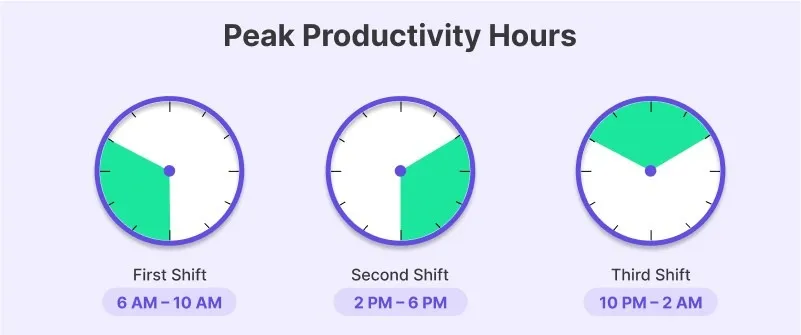
The Advantages Of Working The First Shift
Here are some major advantages of working the first shift:
1. Consistent Work Schedule
Working the first shift means having a consistent and predictable work schedule.
It helps employees plan their daily lives more effectively, fostering a better work-life balance.
Setting fixed work hours each day enables better time management and lowers stress levels
2. Optimal Business Hours
The first shift typically aligns with regular business hours, ensuring employees work during the most productive and efficient times.
Having regular work hours helps employees stay alert and focused. This allows them to do higher-quality work and be more productive.
3. Increased Availability for Meetings
Working the morning shift means employees can easily collaborate, attend meetings, and discuss work during normal business hours.
This increased availability facilitates better communication and teamwork, as team members can easily coordinate and address important matters without scheduling conflicts.
4. Cost Efficiency
Operating during standard business hours can contribute to cost efficiency.
Utilities and resources are often optimized during the day, and businesses may save on overtime expenses that could be incurred during evening or night shifts.
It can help in boosting your revenue and also contribute to improving your organization’s financial health.
5. Employee Well-Being and Satisfaction
Working the first-shift schedule can help people have better sleep and feel healthier. Being awake during daylight hours is good for mental health and eventually leads to making workers happier and more involved.
A well-rested employee tends to work harder and get more done.
6. Teams Work Better Together
When everyone works at the same time, it’s easier for teams to work together. This leads to better teamwork, quicker choices, and a more united workplace.
Teams that can talk and share info easily work faster and better.
7. Easier Management and Supervision
For bosses, watching over first shift workers is simpler.
With a clear and consistent schedule, it becomes easier to monitor employee performance, provide timely feedback, and address any issues that may arise.
This makes managing smoother and helps the whole company run better.

6 Tips For Working The First Shift
Here are six important tips for working the first shift:
1. Prioritize Tasks
When working the first shift, it’s crucial to prioritize your tasks.
Establish which tasks are critical and need to be completed in the first part of the day to establish better order of task performance.
The technique of prioritizing your priorities ensures that you are organized and you avoid situations where things pile up that may stress you.
2. Create a Morning Routine
It is wise to set your daily schedules so that the morning hours can be utilized in the correct manner.
Specific habits that can bring positivity in the morning include having a healthy breakfast, exercising, or practicing mindfulness, all of which should be repeated every morning.
It can improve the overall energy levels and help you to focus during working hours.
Read More: What is Moonlighting? Meaning and Guide
3. Prepare the Night Before
To avoid cramming your mornings, it is advisable to plan for the following day before going to bed.
Arrange your clothes, prepare your lunchbox, and sort out all items needed for work.
It helps to reduce morning stress and allows you to begin the first shift mentally prepared and capable of performing the duties required.
4. Establish a Consistent Sleep Schedule
If first-shift employees adhere to a fixed sleeping schedule, they can maintain good health.
Try to ggo to bed and wake up at the same time every night/morning to get enough sleep.
It assists in maintaining the biological clock of the body along with better health, alertness and work performance during working hours.
5. Stay Connected with Colleagues
It is essential to maintain communication in any workplace. Communicate with friends on a daily basis by sharing new information and coordinating work assignments.
Face-to-face interaction, phone conversations, and other online means of communication should be encouraged since they strengthen the relations and cooperation of employees.
6. Take Breaks Strategically
Taking breaks at the right time while working the first shift aids in refocusing to be more productive at work.
These may entail moving around for a few minutes, undertaking some light exercises, or even taking a short nap.
Taking breaks at certain intervals will help in avoiding fatigue and will also make for a more productive and fresh worker in your working day.
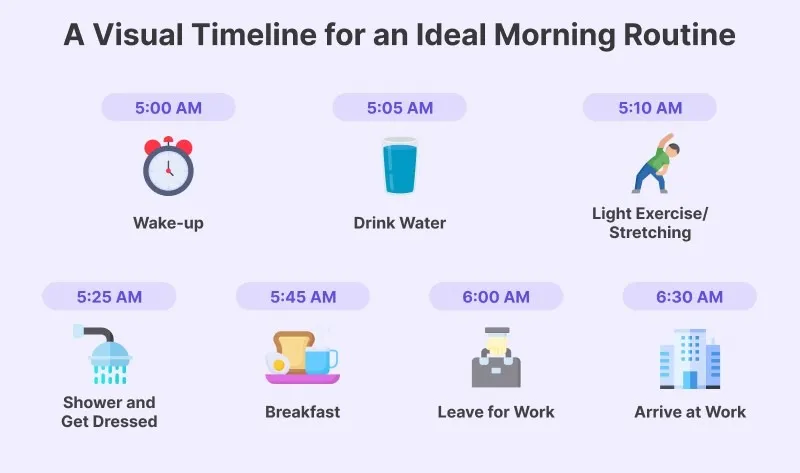
Challenges Of The First Shift
Here are the major challenges of the first shift:
1. Limited Flexibility
Working the first shift may require limited flexibility in adjusting your work hours.
The major disadvantage of this schedule is that it is not as flexible as other schedules and might inconvenience those who may have extra demands for their time such as family needs.
2. Potential for Understaffing During Peak Hours
One possible drawback of having staff work during off-peak hours is that there may be too few of them on the first shift.
It may cause organizations to create extra stress on manpower, strain responding to customers, or delay some organizational work.
3. Increased Operational Costs
Operating during standard business hours on the first shift can increase operational costs.
Utilities, equipment, and resources may be utilized more during these peak hours, contributing to increased expenses for the organization.
4. Time Zone Challenges
The first shift may prove arduous for some organizations, particularly those whose operations extend across different geographic regions; time zones may act as a barrier here.
One of the challenges is working with other teams or clients in different time zones, which increases the possibility of a delay in the exchange of communication or information.
5. Potential Burnout
The first-shift employees are most likely to feel burned out at work, particularly when they spend many hours at work without adequate rest.
Stress and fatigue from working during standard business hours can be influential in impacting one’s health both physically and mentally.
6. Overreliance on Single-Shift Operation
Relying solely on the first shift may limit operational flexibility.
Unexpected events, emergencies, or workload fluctuations may strain the system, as there might not be additional shifts to handle increased demand or address urgent issues efficiently.
This overreliance can impact overall adaptability and responsiveness.
Overcoming First Shift Challenges With Workstatus
Working the early first shift poses unique challenges like lack of flexibility, morning rush hour commutes, and fatigue from the early wake-up.
Thankfully, tools like Workstatus provide useful solutions tailored to alleviate first-shift difficulties.
Workstatus Features:
1. Activity Level Monitoring
Workstatus’s productivity tracking gives managers clear insights into employee energy, focus, and effort patterns over the first shift hours.
By understanding these trends, managers can better assign tasks and projects based on peak productivity times and natural highs and lows in energy.
2. Flexible Scheduling
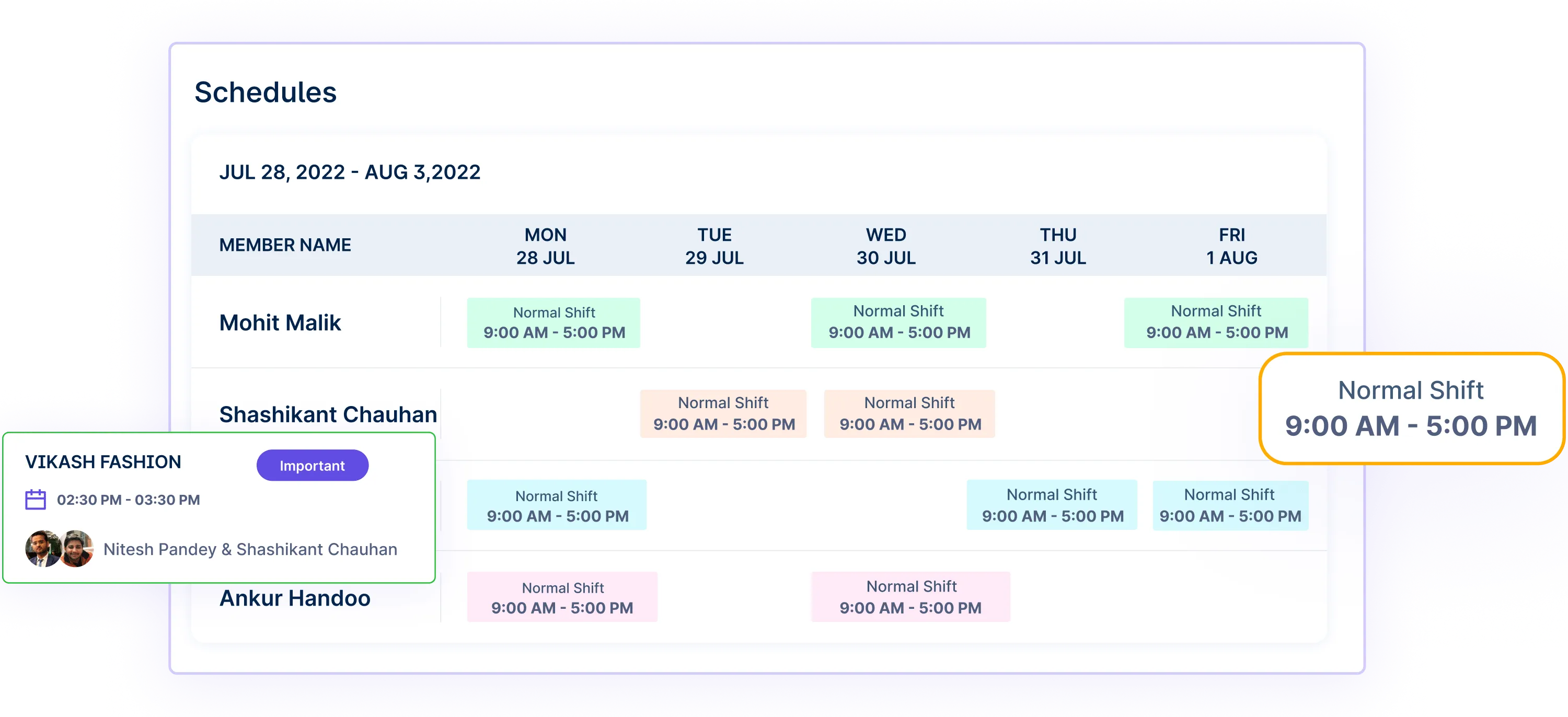
Workstatus’s productivity tracking gives managers clear insights into employee energy, focus, and effort patterns over the first shift hours.
By understanding these trends, managers can better assign tasks and projects based on peak productivity times and natural highs and lows in energy.
2. Flexible Scheduling

Workstatus enables employers to easily manage shift swaps, change hours, or offer shift coverage for first-shift employees.
It brings more flexibility to an otherwise rigid early morning schedule. Managers maintain oversight of all scheduling changes.
3. Remote Work Options
![]()
Working remotely, even a few days a week, removes the grueling morning commute that many find draining when working the first shift.
Workstatus’s robust remote worker management features enable partial or fully remote schedules while still maintaining productivity.
4. Time Off Management
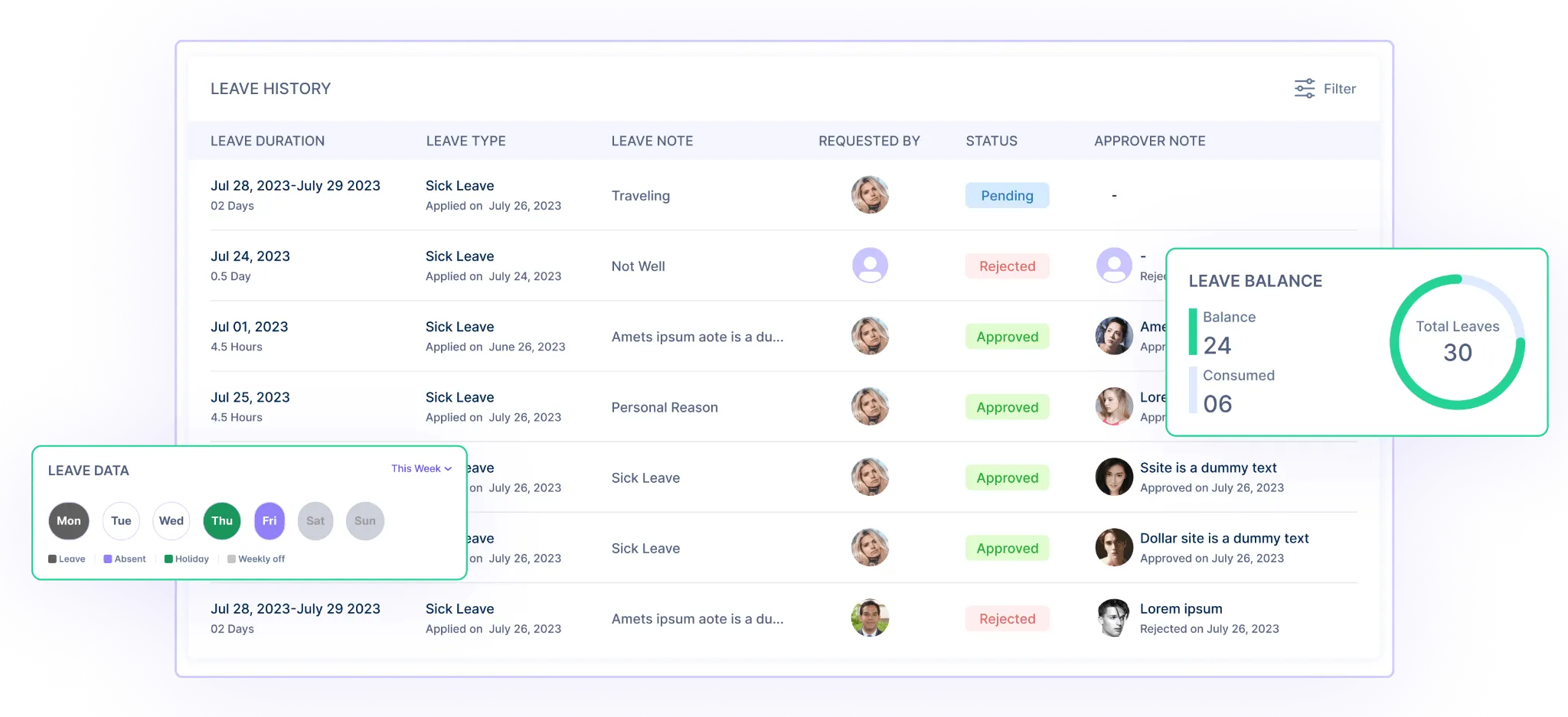
Using Workstatus’s comprehensive PTO tracking features, first-shift employees can seamlessly request time off, view balances, and manage approvals.
It empowers people to recharge from early mornings properly.
5. Overtime Insights
![]()
Workstatus’s detailed timesheet reporting and overtime tracking bring visibility into overtime trends across the first shift team.
It allows managers to adjust workloads before burnout becomes an issue proactively.
6. Payroll Automation
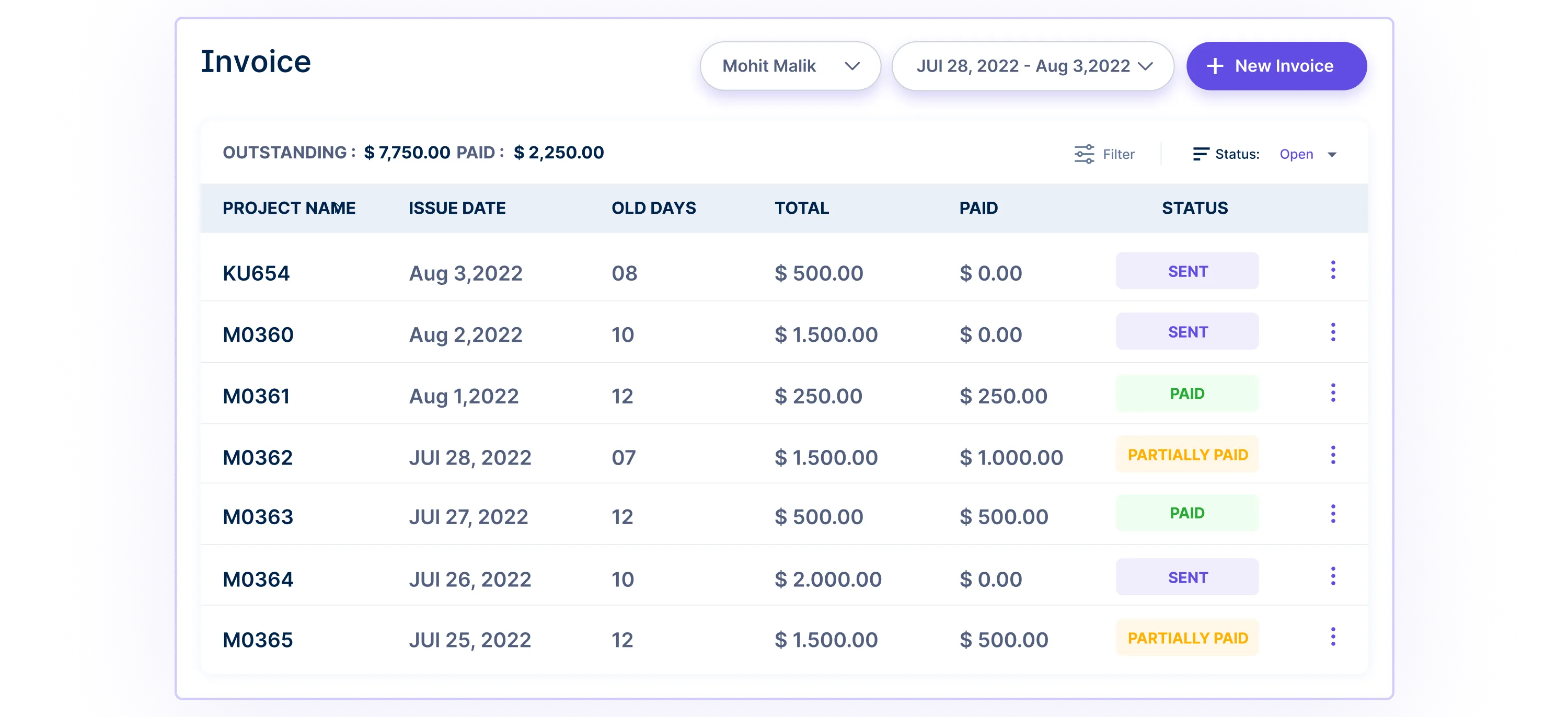
By automating payroll calculations, Workstatus eliminates manual errors that can often crop up when processing non-standard hours like early first shifts.
Everything stays accurate.
With Workstatus’s suite of workforce management tools, first-shift challenges like inflexibility, commute struggles, and fatigue can be mitigated or avoided altogether.
The platform supports both managers and employees in optimizing the early schedule.
Health And Well-being Considerations
Working the early hours of the first shift can impact energy levels, sleep quality, diet, exercise, and overall work-life balance. Focusing on getting adequate sleep through a consistent evening routine is important.
Eating a healthy breakfast fuels the morning, while meal prepping ensures you have good options.
Late afternoon and early evening workouts fit best with first-shift hours. Managing stress is also essential – take short breaks during the shift and don’t neglect taking vacation time.
Use your evening time to have fun, engage with your family, partake in a favorite activity, or meet with friends.
Adjustments to your daily habits and lifestyle allow you to maintain your health and well-being while working the demanding first shift schedule.
Closing Thoughts
Working the early first shift has its advantages and difficulties. But with the right strategies, you can make the most of the morning schedule.
Some key benefits are avoiding rush hour, having evenings free, and aligning with business hours. However, challenges like lack of flexibility and morning fatigue arise, too.
To optimize the first shift, focus on maintaining a consistent sleep routine, preparing the night before, creating efficient morning processes, and taking breaks to recharge.
While not without some sacrifices, the first shift enables productivity and work-life balance. Employees and managers can thrive during the critical early morning hours with the tips outlined.
The first shift sets the tone for the workday. Professionals can maximize their performance, health, and job satisfaction by understanding its nuances and using proactive strategies.



